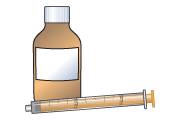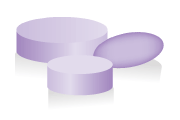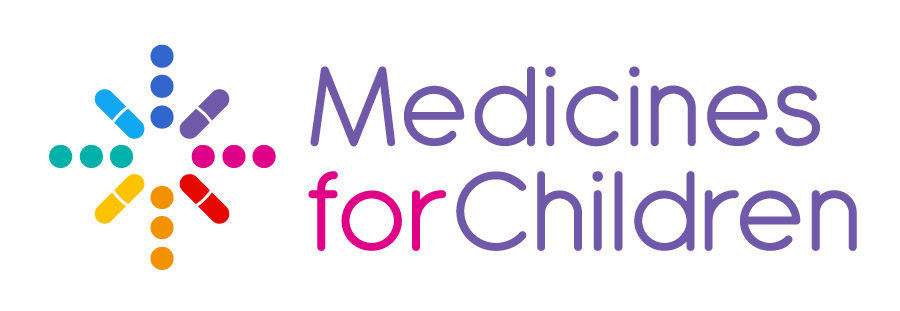Trihexyphenidyl hydrochloride for dystonia
This leaflet is for parents and carers about how to use this medicine in children. Our information may differ from that provided by the manufacturers, because their information usually relates to adults. Read this leaflet carefully. Keep it somewhere safe so that you can read it again.
Do not stop giving this medicine suddenly, as your child could get withdrawal symptoms.
Name of medicine
Trihexyphenidyl hydrochloride (also known as benzhexol hydrochloride); we refer to it as trihexyphenidyl in this leaflet.
Why is it important for my child to take Trihhexyphenidyl?
Children with dystonia can get painful and distressing movements and muscle spasms and may have difficulty with sitting, standing and moving. Trihexyphenidyl acts in the brain to slow down messages to the muscles and nerves. This reduces muscle stiffness and improves comfort.What is Trihhexyphenidyl available as?
- Tablets: 2 mg, 5 mg
- Liquid medicine: 5 mg in 5 mL
When should I give Trihhexyphenidyl
Trihhexyphenidyl may be given once, twice or three times each day. Your doctor will tell you how often to give it.
- Once a day: this can be in the morning OR the evening.
- Twice a day: this should be once in the morning and once in the evening. Ideally, these times are 10–12 hours apart, for example some time between 7am and 8am, and between 7pm and 8pm.
- Three times each day: this should be once in the morning, once in the early afternoon and once in the evening. Ideally, these times are at least 6 hours apart, for example 8am, 2pm and 8pm.
Give the medicine at about the same time(s) each day so that this becomes part of your child’s daily routine, which will help you to remember.
How much should I give?
Your doctor will work out the amount of Trihhexyphenidyl (the dose) that is right for your child. The dose will be shown on the medicine label.
When you first start giving Trihhexyphenidyl to your child, you will probably give them a low dose, which may be increased bit by bit over a few days or weeks. This helps your child to get used to the medicine. Your doctor will explain what to do.
It is important that you follow your doctor’s instructions about how much to give.
Do not change the dose without talking to your doctor.
How should I give Trihhexyphenidyl?

Liquid medicine
Shake the medicine well. Measure out the right amount using an oral syringe or medicine spoon. You can get these from your pharmacist. Do not use a kitchen teaspoon as it will not give the right amount. Make sure your child takes it all straight away.
Trihhexyphenidyl should be taken with or just after food

Tablets
- Tablets should be swallowed with a glass of water, squash or juice. Your child should not chew the tablet.
- You can crush the tablet and mix it with a small amount of soft food such as yogurt, jam or mashed potato. Make sure your child swallows it straight away, without chewing.
Trihhexyphenidyl should be taken with or just after food
When should the medicine start working?
Trihexyphenidyl starts to work straight away but you may not see immediate differences – it may take a few weeks for the full effect to be seen as you gradually increase the dose. Continue to give the medicine as instructed by your doctor. It may take a while to find the dose that works best for your child.What if my child is sick (vomits)?
- If your child is sick less than 30 minutes after having a dose of Trihhexyphenidyl, give them the same dose again.
- If your child is sick more than 30 minutes after having a dose of Trihhexyphenidyl, do not give them another dose. Wait until the next normal dose.
If your child is sick again, seek advice from your family doctor, nurse, pharmacist, or hospital. They will decide what to do based on your child’s condition and the specific medicine involved.
What if I forget to give it?
If you usually give it once a day: Give the missed dose when you remember during the day, as long as this is at least 12 hours before the next dose is due. If you remember after this time, do not give the missed dose. Wait until the next usual dose.
If you usually give it twice a day: If you remember up to 4 hours after you should have given a dose, give your child the missed dose. For example, if you usually give a dose at about 7am, you can give the missed dose at any time up to 11am. If you remember after that time, do not give the missed dose. Give the next dose as usual.
If you usually give it three times a day: Do not give the missed dose. Just give the next dose as usual.
Never give a double dose of Trihhexyphenidyl.
What if I give too much?
If you are concerned that you may have given more than one extra dose, contact your doctor or local NHS services (details at end of leaflet) or take your child to hospital straight away. Take the medicine container or packaging with you, even if it is empty. This will be useful to the doctor. Have the packaging with you if you telephone for advice.
Are there any possible side effects?
We use medicines to make our children better, but sometimes they have other effects that we don’t want (side-effects).
Side effects you must do something about
If your child cannot pass urine (do a wee) when they feel they need to, contact your doctor straight away or take your child to hospital, as there is a risk of kidney damage.
Your child’s eyesight may become blurred (fuzzy). If this happens, contact your doctor for advice.
Other side-effects you need to know about
Your child may get some of the following side effects when they first start taking Trihhexyphenidyl. These usually wear off after a few days as your child gets used to the medicine. If they are still a problem after a week, or you are worried, contact your doctor but continue to give Trihhexyphenidyl.
Your child may get constipation (have difficulty doing a poo). Laxatives may help – ask your pharmacist for advice.
Your child may feel sick (nausea) or be sick (vomit).
- Your child may get a dry mouth. Eating citrus fruits (e.g. oranges) and taking sips of water may help.
They may seem agitated, show changes in mood, have difficulty remembering things, may seem confused and may have hallucinations (seeing things that are not there).
Your child may sometimes get side-effects that are not listed above. If you notice anything unusual and are concerned, contact your doctor. You can report any suspected side-effects to the UK safety scheme at mhra.gov.uk/yellowcard.
More information on side-effects can be found in a leaflet on our website.
Can other medicines be given at the same time as Trihhexyphenidyl?
You can give your child medicines that contain paracetamol or ibuprofen, unless your doctor has told you not to.
Trihhexyphenidyl should not be taken with some medicines that you get on prescription. It is important to tell your doctor and pharmacist about any other medicines your child is taking before starting Trihhexyphenidyl.
Check with your doctor or pharmacist before giving any other medicines to your child. This includes herbal and complementary medicines.
Is there anything else I need to know about this medicine?
- Do not suddenly stop giving Trihhexyphenidyl to your child, as they may get withdrawal symptoms.
- If your doctor decides to stop a particular medicine, they will discuss this with you. You will usually reduce the dose bit by bit. Your doctor will explain how to do this. Do not change the dose without talking to your doctor first.
If you or your child wants to stop this medicine, discuss this with your doctor. They may want to reduce the dose slowly.
If you or your child want to stop this medicine, discuss this with your doctor. Do not change the dose without talking to your doctor first.
General advice about medicines
- If you are not sure a medicine is working, contact your doctor but continue to give the medicine as usual in the meantime. Do not give extra doses, as you may do harm.
- Only give this medicine to your child. Never give it to anyone else, even if their condition appears to be the same, as this could do harm.
- Try to give medicines at about the same times each day, to help you remember.
- Make sure that you always have enough medicine. Order a new prescription at least 2 weeks before you will run out.
- Make sure that the medicines you have at home have not reached the ‘use by’ date on the packaging. Give old medicines to your pharmacist to dispose of.
- If you think someone else may have taken the medicine, contact a doctor straight away.
Where should I keep this medicine?
- Keep the medicine in a cupboard, away from heat and direct sunlight. It does not need to be kept in the fridge.
- Make sure that children cannot see or reach the medicine.
- Keep the medicine in the container it came in.
Who to contact for more information?
Your doctor, pharmacist or nurse will be able to give you more information about Trihhexyphenidyl and about other medicines used to treat dystonia.
England: NHS 111
Tel 111
www.nhs.ukScotland: NHS 24
Tel 111
www.nhs24.scotNorthern Ireland: NI Direct
Wales: NHS 111 Wales
Tel 111
www.111.wales.nhs.ukDystonia UK
020 7793 3651
www.dystonia.org.uk/Copyright disclaimer
Version [2]. © NPPG, RCPCH and WellChild, all rights reserved. Review by December 2027.
The primary source for the information in this leaflet is the British National Formulary for Children. For details on any other sources used for this leaflet, please contact us through our website, www.medicinesforchildren.org.uk.
We take great care to make sure that the information in this leaflet is correct and up-to-date. However, medicines can be used in different ways for different patients. It is important that you ask the advice of your doctor or pharmacist if you are not sure about something. This leaflet is about the use of these medicines in the UK, and may not apply to other countries. The Royal College of Paediatrics and Child Health (RCPCH), the Neonatal and Paediatric Pharmacists Group (NPPG), WellChild and the contributors and editors cannot be held responsible for the accuracy of information, omissions of information, or any actions that may be taken as a consequence of reading this leaflet.
